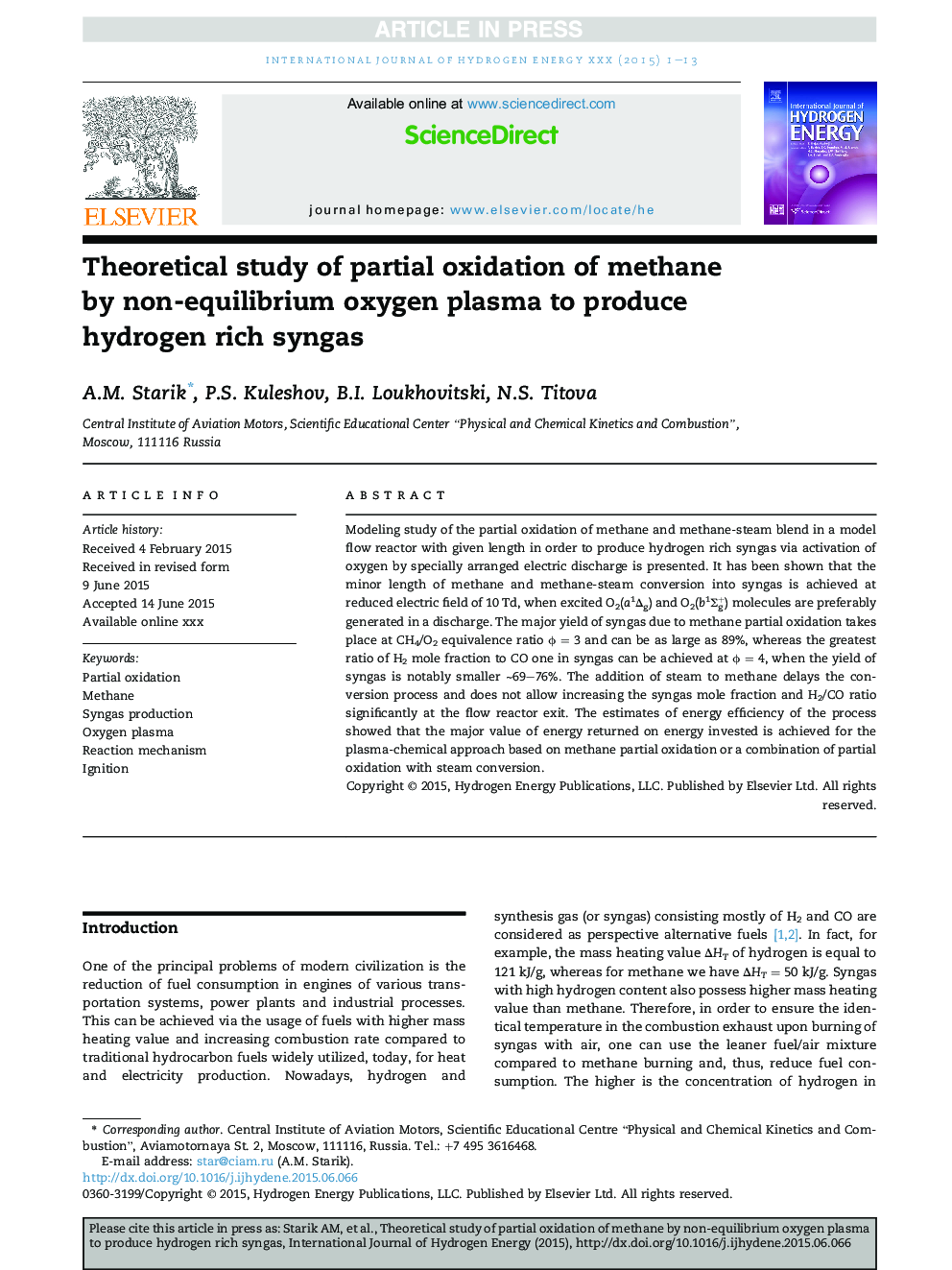| Article ID | Journal | Published Year | Pages | File Type |
|---|---|---|---|---|
| 7714575 | International Journal of Hydrogen Energy | 2015 | 13 Pages |
Abstract
Modeling study of the partial oxidation of methane and methane-steam blend in a model flow reactor with given length in order to produce hydrogen rich syngas via activation of oxygen by specially arranged electric discharge is presented. It has been shown that the minor length of methane and methane-steam conversion into syngas is achieved at reduced electric field of 10 Td, when excited O2(a1Îg) and O2(b1Σg+) molecules are preferably generated in a discharge. The major yield of syngas due to methane partial oxidation takes place at CH4/O2 equivalence ratio Ï = 3 and can be as large as 89%, whereas the greatest ratio of H2 mole fraction to CO one in syngas can be achieved at Ï = 4, when the yield of syngas is notably smaller â¼69-76%. The addition of steam to methane delays the conversion process and does not allow increasing the syngas mole fraction and H2/CO ratio significantly at the flow reactor exit. The estimates of energy efficiency of the process showed that the major value of energy returned on energy invested is achieved for the plasma-chemical approach based on methane partial oxidation or a combination of partial oxidation with steam conversion.
Related Topics
Physical Sciences and Engineering
Chemistry
Electrochemistry
Authors
A.M. Starik, P.S. Kuleshov, B.I. Loukhovitski, N.S. Titova,
